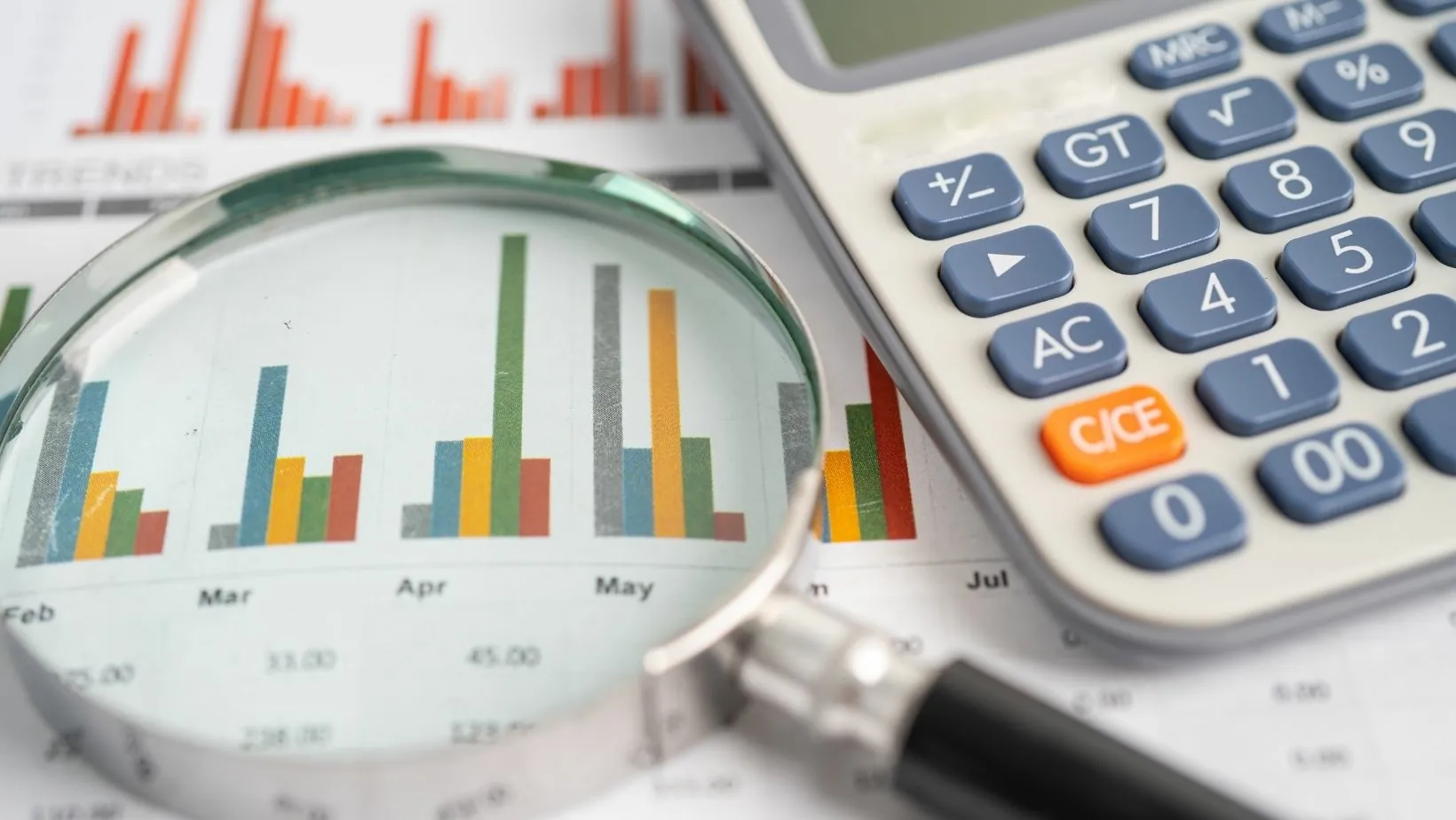In today’s digital landscape, organic reach just doesn’t cut it anymore. Social media platforms have evolved from simple networking sites to powerful marketing machines, and businesses that aren’t leveraging paid advertising are missing out on a gold mine of opportunities.
Think of social media advertising as your business’s golden ticket to reaching the right people at the right time. With over 4.9 billion social media users worldwide, these platforms offer unprecedented access to potential customers who are already scrolling, liking, and engaging with content. But here’s the kicker – while organic posts might reach a fraction of your audience, paid advertising can catapult your message straight to your target market’s feed with laser-precision targeting.
Table of Contents
ToggleUnderstanding Paid Social Media Advertising
Paid social media advertising enables businesses to display targeted content to specific audience segments through social platforms. These campaigns operate on a pay-to-play model where advertisers bid for ad space in users’ feeds.
Key Platforms for Paid Social Ads
Social media advertising thrives across five major platforms. Facebook leads with 2.9 billion monthly active users offering advanced targeting options for demographics age 25-54. Instagram captures 2 billion monthly users with strong engagement rates for visual content targeting audiences age 18-34. LinkedIn reaches 875 million professionals with B2B advertising capabilities focused on job titles industry verticals. TikTok engages 1.7 billion users through short-form video ads targeting Gen Z audiences age 16-24. Twitter provides 450 million monetizable daily active users with real-time advertising opportunities.
| Platform | Monthly Active Users | Primary Age Range |
|---|---|---|
| 2.9 billion | 25-54 | |
| 2 billion | 18-34 | |
| TikTok | 1.7 billion | 16-24 |
| 875 million | 25-65 | |
| 450 million | 18-49 |
How Paid Social Differs From Organic Content
Paid social content guarantees visibility to targeted audiences through strategic placement. Organic posts reach 2-5% of followers while paid ads achieve 15-25% engagement rates. Paid campaigns offer precise targeting options including demographics location interests behaviors. Analytics tools track paid content performance through metrics like click-through rates conversions ROI. Paid ads feature customizable calls-to-action enhanced visuals expanded character limits. These posts display distinctive “Sponsored” labels maintaining transparency with users. The algorithmic prioritization ensures paid content appears prominently in user feeds during peak engagement times.
Enhanced Brand Visibility and Awareness
Paid social media advertising amplifies brand exposure through strategic content placement across multiple platforms. This targeted approach ensures consistent brand presence in users’ social media feeds.
Reaching Wider Targeted Audiences
Paid social advertising connects brands with specific demographic segments based on interests, behaviors, location and purchasing patterns. Facebook’s advanced targeting options enable advertisers to reach custom audiences through parameters like age (25-34), income level ($75k+) and shopping preferences. Instagram’s advertising platform delivers content to over 2 billion monthly active users through targeted stories, reels and feed posts. Social platforms’ robust targeting capabilities allow brands to expand their reach from local markets to global audiences while maintaining relevance to each segment.
Improved Brand Recognition
Strategic paid social campaigns increase brand recall through consistent exposure across multiple touchpoints. LinkedIn reports that brands running paid campaigns see a 30% increase in brand recognition within 60 days. Regular appearance in social feeds through sponsored content creates mental associations between products and consumer needs. Platforms like TikTok demonstrate 92% higher brand recall from paid advertising compared to traditional digital ads. Coordinated paid campaigns across Facebook, Instagram and Twitter reinforce brand messaging through complementary visual and text-based content delivered to targeted audience segments.
Advanced Targeting Capabilities
Social media platforms offer sophisticated targeting tools that enable advertisers to reach specific audience segments with precision. These capabilities extend beyond basic demographic filters to include complex behavioral patterns and interest-based targeting options.
Demographics and Interest-Based Targeting
Social platforms collect extensive user data to create detailed demographic profiles based on age, location, income level, education and occupation. Facebook’s targeting system processes over 52,000 unique personal attributes to match advertisers with their ideal audiences. Advertisers select multiple targeting parameters including hobbies (such as photography, gaming, fitness), entertainment preferences (favorite movies, TV shows, music) and shopping behaviors. Instagram’s interest targeting reaches 1.3 billion active users through categories like fashion, food, travel and technology. LinkedIn’s professional targeting identifies users based on job titles, company size, industry and skills, with 4 out of 5 members driving business decisions.
Behavioral and Lookalike Audiences
Behavioral targeting analyzes user actions like website visits, app interactions and purchase history to identify potential customers. Facebook’s lookalike audiences match existing customer profiles with similar users, expanding reach by 5-10x while maintaining conversion rates. Advertisers track specific behaviors including:
- Past purchase patterns
- Device usage preferences
- Content engagement metrics
- App interaction frequency
- Website browsing habits
Pinterest reports 2.3x higher conversion rates using behavioral targeting compared to standard demographic targeting. TikTok’s algorithm identifies patterns across 1 billion monthly active users to create custom audience segments based on video interactions, sharing behavior and time spent on specific content types.
Measurable ROI and Performance Tracking
Social media advertising platforms provide comprehensive analytics tools to measure campaign performance accurately. These platforms track multiple metrics in real-time, enabling advertisers to calculate their return on investment (ROI) precisely.
Real-Time Analytics and Insights
Social media platforms deliver instant performance data through detailed dashboards. Advertisers access key metrics including click-through rates (CTR), impressions, engagement rates, and conversion tracking. Facebook Ads Manager displays metrics in real-time with a 98.5% accuracy rate, while LinkedIn’s Campaign Manager reports engagement metrics within 24 hours. Advanced tracking features monitor user behaviors such as video watch time, link clicks, and post interactions. These insights enable data-driven decisions about content optimization, audience targeting, and budget allocation.
Cost-Effective Campaign Management
Social media advertising platforms offer granular budget control with spend monitoring features. Facebook’s automated budget optimization increases ROI by 30% compared to manual management, while LinkedIn’s objective-based pricing ensures advertisers pay only for desired actions. Campaign managers adjust spending in real-time based on performance metrics. Automated bidding systems optimize ad placement across platforms to maximize results within budget constraints. A/B testing capabilities allow advertisers to identify top-performing content variations, reducing cost per acquisition by an average of 25%.
Accelerated Business Growth
Paid social media advertising catalyzes rapid business expansion through strategic audience targeting and enhanced digital presence. Social platforms create direct pathways to accelerated growth through increased visibility and engagement opportunities.
Increased Website Traffic
Paid social ads generate significant website traffic through strategic placement in user feeds. Facebook ads drive 3x more referral traffic compared to organic posts, with an average click-through rate of 1.11%. Instagram’s shopping features connect 50% of users directly to brand websites, resulting in 130 million monthly product tag clicks. Platforms like Pinterest deliver 33% higher website visitors from paid promotions versus organic content. Social media advertising platforms optimize ad placement timing to maximize traffic potential during peak user activity hours.
Higher Conversion Rates
Social media paid advertising delivers superior conversion rates across multiple platforms. Facebook ads achieve a 9.21% conversion rate across industries, compared to 1.3% for organic content. Instagram Shopping posts convert at 1.85x higher rates than standard posts, generating $1.2 billion in quarterly revenue. LinkedIn’s sponsored content converts 3.5x better than other ad formats, with B2B marketers reporting 40% higher conversion rates. TikTok ads demonstrate 2.89% conversion rates for e-commerce campaigns, outperforming industry standards by 60%.
Competitive Advantage in the Digital Space
Paid social media advertising creates distinct market advantages through strategic positioning and data-driven decision-making. Companies leveraging paid social ads gain competitive edges in saturated digital landscapes by accessing premium features unavailable to organic content.
Standing Out in Crowded Markets
Paid advertising enables brands to capture prime digital real estate across social platforms through prominent placement in user feeds. Instagram’s sponsored posts receive 3x more engagement than organic content, while Facebook ads appear in 25% more relevant feeds than non-promoted posts. Advanced targeting tools let advertisers segment audiences by specific interests, demographics or behaviors, creating focused campaigns that resonate with intended viewers. Premium ad placements, such as Instagram Stories or Facebook News Feed positions, guarantee visibility during peak user activity periods.
Staying Ahead of Industry Trends
Social media platforms provide advertisers with real-time market insights through comprehensive analytics dashboards. Facebook’s Ads Manager reveals emerging consumer behaviors across 52,000 data points, while LinkedIn’s Campaign Manager tracks industry-specific engagement patterns. Companies access exclusive beta features for new ad formats before public release, gaining first-mover advantages in their markets. Platform-specific trend reports highlight shifting consumer preferences, enabling brands to adjust targeting strategies proactively. Advanced A/B testing capabilities let advertisers optimize campaigns based on performance data before competitors identify successful approaches.
Paid social media advertising stands as a cornerstone of modern digital marketing success. Today’s businesses can’t afford to rely solely on organic reach when their competitors are leveraging sophisticated targeting tools and analytics.
The data clearly shows that paid social campaigns deliver superior engagement metrics visibility and ROI compared to organic efforts. From Facebook’s advanced targeting capabilities to LinkedIn’s professional networking power these platforms offer unique opportunities to connect with ideal customers.
Smart businesses will continue investing in paid social advertising to stay competitive and drive growth in an increasingly digital marketplace. Those who embrace these powerful tools while optimizing their campaigns through data-driven decisions will find themselves well-positioned for long-term success.



